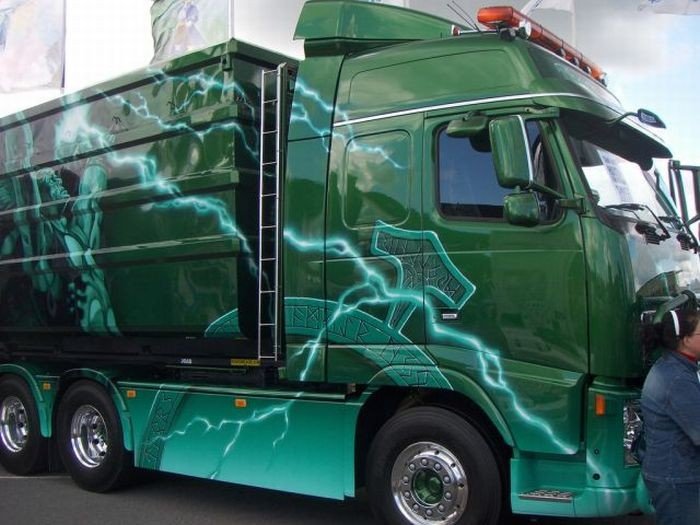|
|
Power Truck Show 2009
|
• Drivetrain
Small trucks use the same type of transmissions as almost all cars, having either an automatic transmission or a manual transmission with synchromesh (synchronizers). Bigger trucks often use manual transmissions without synchronizers, saving bulk and weight, although synchromesh transmissions are used in larger trucks as well. Transmissions without synchronizers, known as "crash boxes", require double-clutching for each shift, (which can lead to repetitive motion injuries), or a technique known colloquially as "floating", a method of changing gears which doesn't use the clutch, except for starts and stops, due to the physical effort of double clutching, especially with non power assisted clutches, faster shifts, and less clutch wear.
Double-clutching allows the driver to control the engine and transmission revolutions to synchronize, so that a smooth shift can be made; for example, when upshifting, the accelerator pedal is released and the clutch pedal is depressed while the gear lever is moved into neutral, the clutch pedal is then released and quickly pushed down again while the gear lever is moved to the next higher gear. Finally, the clutch pedal is released and the accelerator pedal pushed down to obtain required engine speed. Although this is a relatively fast movement, perhaps a second or so while transmission is in neutral, it allows the engine speed to drop and synchronize engine and transmission revolutions relative to the road speed. Downshifting is performed in a similar fashion, except the engine speed is now required to increase (while transmission is in neutral) just the right amount in order to achieve the synchronization for a smooth, non-collision gear change. "Skip changing" is also widely used; in principle operation is the same as double-clutching, but it requires neutral be held slightly longer than a single-gear change.
Common North American setups include 9, 10, 13, 15, and 18 speeds. Automatic and semi-automatic transmissions for heavy trucks are becoming more and more common, due to advances both in transmission and engine power. In Europe, 8, 10, 12 and 16 gears are common on larger trucks with manual transmission, while automatic or semi-automatic transmissions would have anything from 5 to 12 gears. Almost all heavy truck transmissions are of the "range and split" (double H shift pattern) type, where range change and so‑called half gears or splits are air operated and always preselected before the main gear selection.
|
|









